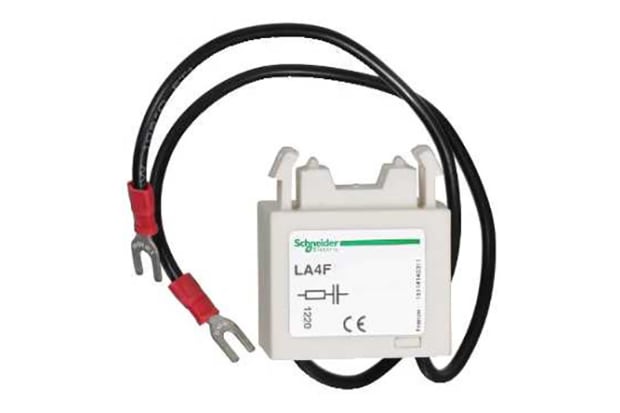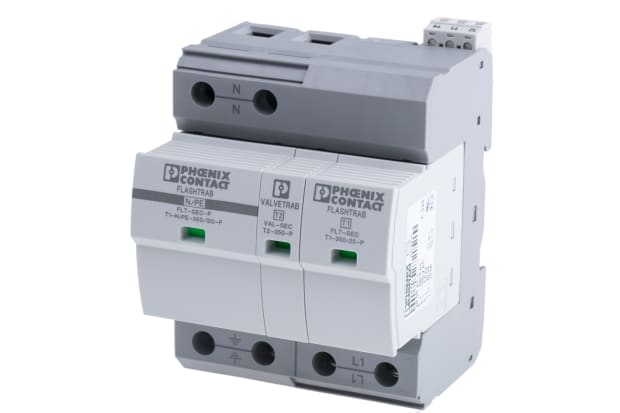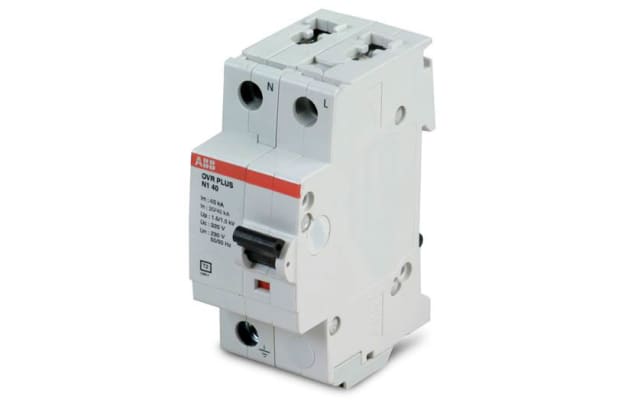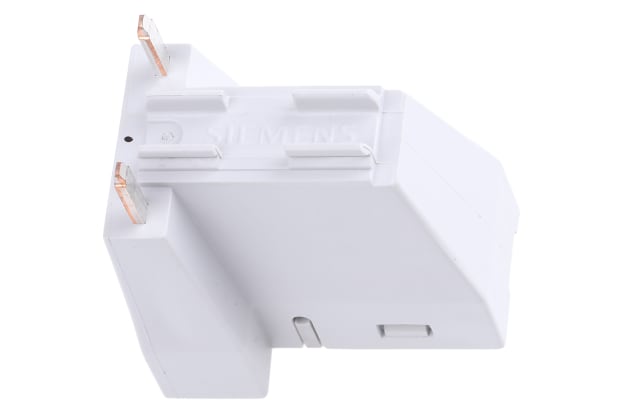- Published 30 Jan 2023
- Last Modified 4 Sept 2023
- 7 min
A Complete Guide to Industrial Surge Protection
A Complete Guide to Discover more in our guide and get to know the uses and importance of an industrial surge protection device.

What is Surge Protection?
The purpose of surge protection is to protect electronic devices from power surges or transient voltage. Surge power or transient voltage is a drastic increase in voltage which is significantly higher than the designated level in a flow of electricity.
It is also worth noting that the mains voltage varies between different countries. For example, in the UK, the standard voltage is 230 volts. However, in the US, the standard voltage is 120 volts. Problems may occur if the voltage rises above this threshold. This is why electrical surge protection is utilised to help prevent these issues.
Do I Need Surge Protection?
It is always recommended to have surge protection. These devices can help to prevent loss or damage to delicate electronic equipment, but they are also important for safety reasons.
Understanding why surge protection is worth it means that you will have full knowledge of the hazards associated with voltage spikes or surges. These events can last between just a few nanoseconds to microseconds, yet despite their short duration, they can put very high amounts of pressure on electrical devices.
Additionally, certain regulations such as the IET 18th edition standards both advise and recommend the installation of electrical protection in industrial environments. Transient voltage and power surges can present a great risk to both individuals and equipment, which is why the role that surge protection plays should not be overlooked when it comes to safety.
Surge Protection Devices
There are various types of surge protection devices and it is important to know the options available when choosing a surge protector. Common surge protection device types include:
- Surge Protection Sockets – these are sockets or multi-socket strips which incorporate surge protection devices. They are typically used in domestic applications
- Surge Protection Plugs – these are typically either plug-in adaptors or power plugs with pre-built surge protection on the device that they connect into mains sockets
- Telephone Surge Protection Devices – these act as adaptors for the RJ11 or RJ12 port connected into, featuring inbuilt surge protection
What is a Surge Protection Device?
Surge Protection Devices (SPD) and Transient Voltage Surge Suppressors (TVSS) are electrical surge protection devices. They are typically installed in heavy-duty industrial systems including power distribution panels, communications systems, and process control systems.
These devices are designed to protect against electrical surges and power spikes, including those caused by lightning. Smaller, scaled-down versions of these industrial devices can also be installed in residential electrical panels. These residential surge protection devices are intended to protect everyday household equipment from similar hazards.
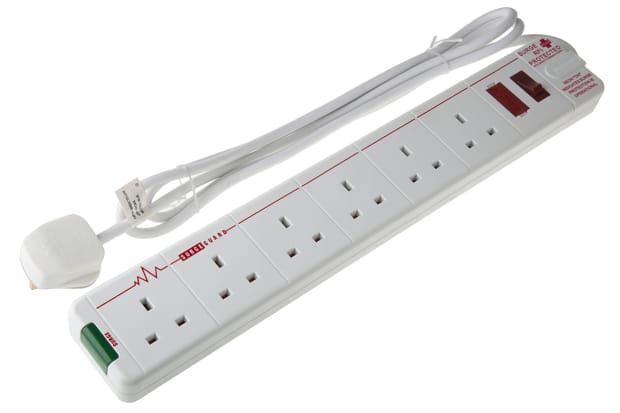
What is Surge Protection on an Extension Lead?
As well as a standalone SPD or TVSS, surge protection devices can also be built into plug and multiway adaptors, and multi-socket power strips on extension leads.
Surge protection on extension leads helps to protect devices from power surges and transient voltage by absorbing excess voltage.
Surge Protection Device Types
Surge protection devices are classified according to their standards. This is explained in greater detail in the table below:
Type | Description | Waveform | Characteristics |
|---|---|---|---|
Type 1 | Surge protection devices that can discharge partial lightning current | Typical waveform 10/350µs | Usually employs spark gap technology |
Type 2 | Surge protection devices that can prevent the spread of overvoltage in electrical installations and protect connected equipment | Characterised by an 8/20µs current wave | Usually employs metal oxide varistor (MOV) technology |
Type 3 | Surge protection devices that must only be installed as a supplement to Type 2 devices in the vicinity of sensitive loads | Characterised by a combination of voltage waves (1.20/50µs) and current waves (8/20µs) | Low discharge capacity |
Popular Brands
Schneider
Browse industrial surge protection devices from leading brand Schneider Electric. Shop online with RS.
Phoenix Contact
With an extensive range of options available, shop Phoenix Contact industrial surge protection online with RS.
ABB
Explore the full range of ABB industrial surge protection devices, including varying sizes, voltage protection ratings, and more.
Siemens
Shop Siemens surge protectors and choose from a range of high-quality devices and products.
Industrial Surge Protection
Industrial surge protection devices are designed to protect machinery. These devices can protect equipment and systems such as safety interlock circuits, control systems, and telecommunications in factories and other industrial environments. Industrial surge protection devices are typically fitted in a panel on a DIN rail mount.
Commercial Surge Protection
Commercial surge protection is broadly similar to industrial surge protection. However, with offices and commercial applications, the protection devices are typically installed in building management systems. This could include systems and equipment such as lifts, data centres, emergency lighting, computing, and various other electronics and control systems.
Domestic Surge Protection
Domestic surge protection devices are typically more suitable for lighter-duty applications than their industrial and commercial counterparts. Residential devices can be fitted in consumer units and electric control panels or found in surge protected socket strips for connecting domestic appliances and electronic equipment. Surge protection for appliances can provide peace of mind and help to mitigate safety hazards associated with transient voltage and electrical surges.
Surge Protection 18th Edition
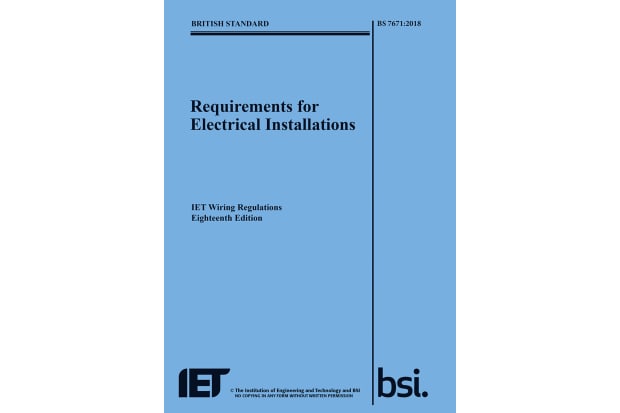
BS7671 18th edition stipulates that transient overvoltage protection should be provided wherever there is a risk that overvoltage could lead to injury or the interruption of commercial business, industrial activity, or public services.
However, in other industrial, commercial, and office applications and environments, a risk assessment should be performed under regulation 443.5 of the surge protection 18th edition standards. This risk assessment should then help you to determine whether additional protection against transient overvoltage will be needed. It is also worth noting that surge protection will typically be added to any electrical installations where the required risk assessment has not been performed, in the interests of safety.
It should be considered that this is not mandatory for domestic applications. Instead, it is the responsibility of the property owner to decide whether or not to fit surge protection devices.
Surge Protection Circuit
There are different types of surge protection circuits with varied implementation. This is a surge protection circuit diagram showing a circuit built with a gas discharge tube. It is designed to protect electrical equipment by implementing redirection in the case of an overvoltage event.
Circuits like this are used to protect electronic components and equipment against transient voltage, power surges, and short-circuiting. They can be used in a variety of applications and environments.

Surge Protection Device Wiring Diagram
The implementation of surge is between two phases or to the earth from both phases. This is clearly demonstrated by the surge protection device wiring diagram to the right.
The diagram shows how built-in surge protection works, absorbing overvoltage by clamping the transient voltage. Surge protector one should typically be sufficient to pass standard surge requirements, yet surge protectors two and three are necessary for higher surge voltage requirements.

How Much Surge Protection Do I Need?
Surge protection is offered in amounts relating to a joule rating. Joules are the standard unit for measurement of energy released over a period of time. As a general rule, the more joules the better. This means that a surge protection device can handle either a single large surge or multiple smaller surges.
With that in mind, deciding how much surge protection you need will depend on various influencing factors. For instance, how much surge is required will depend on the value of the equipment being protected, as well as how many devices require protection. Typically, 1,000 Joules will be adequate for smaller electronics, whereas 2,000-3,000 Joules should provide sufficient protection for everyday electronic devices such as computers, printers, and copiers.
How Do You Choose the Correct Surge Protection?
Choosing a surge protective device depends on a selection of factors. The answers to these questions should help you to identify the most appropriate surge protector for your requirements:
- The exposure of the building to lightning transients
- The value and sensitivity of the equipment requiring protection
- The location of the equipment
- The exposure level of the installation
Once you have been able to answer these questions, you should then be able to successfully narrow down your requirements and select a surge protection device that meets these needs.
